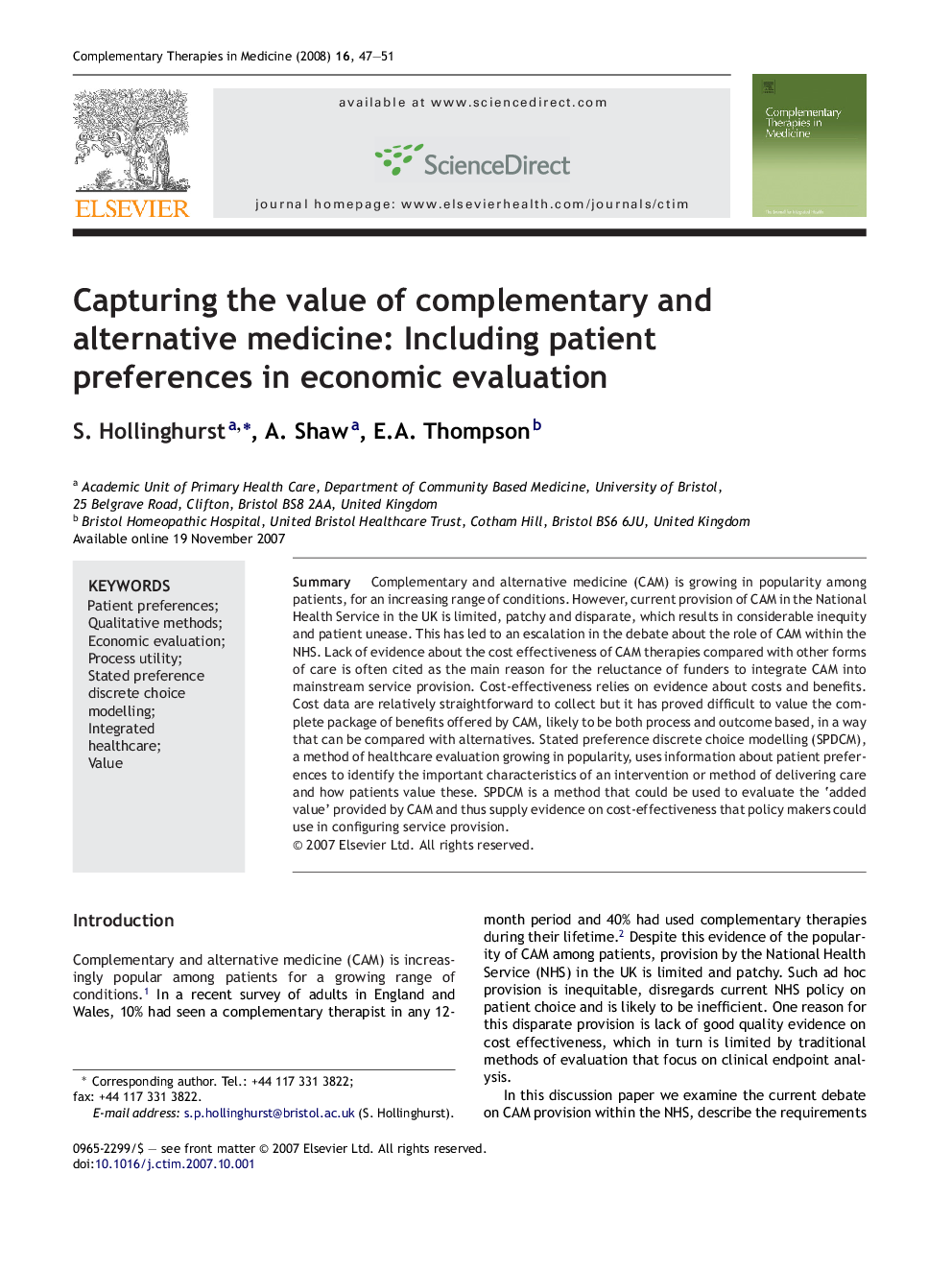| Article ID | Journal | Published Year | Pages | File Type |
|---|---|---|---|---|
| 2629283 | Complementary Therapies in Medicine | 2008 | 5 Pages |
SummaryComplementary and alternative medicine (CAM) is growing in popularity among patients, for an increasing range of conditions. However, current provision of CAM in the National Health Service in the UK is limited, patchy and disparate, which results in considerable inequity and patient unease. This has led to an escalation in the debate about the role of CAM within the NHS. Lack of evidence about the cost effectiveness of CAM therapies compared with other forms of care is often cited as the main reason for the reluctance of funders to integrate CAM into mainstream service provision. Cost-effectiveness relies on evidence about costs and benefits. Cost data are relatively straightforward to collect but it has proved difficult to value the complete package of benefits offered by CAM, likely to be both process and outcome based, in a way that can be compared with alternatives. Stated preference discrete choice modelling (SPDCM), a method of healthcare evaluation growing in popularity, uses information about patient preferences to identify the important characteristics of an intervention or method of delivering care and how patients value these. SPDCM is a method that could be used to evaluate the ‘added value’ provided by CAM and thus supply evidence on cost-effectiveness that policy makers could use in configuring service provision.
